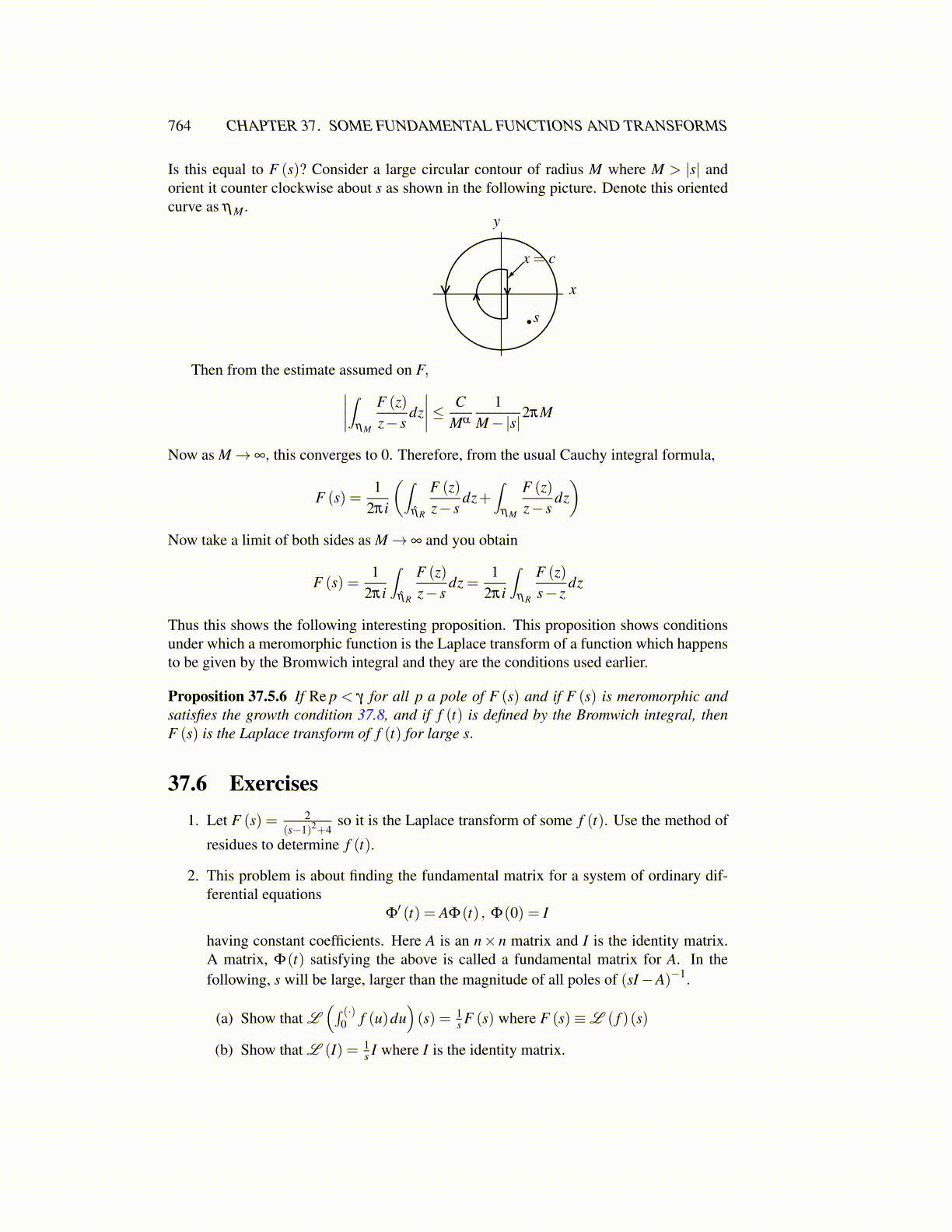
764 CHAPTER 37. SOME FUNDAMENTAL FUNCTIONS AND TRANSFORMS
Is this equal to F (s)? Consider a large circular contour of radius M where M > |s| andorient it counter clockwise about s as shown in the following picture. Denote this orientedcurve as ηM .
x
x = c
y
s
Then from the estimate assumed on F,∣∣∣∣∫ηM
F (z)z− s
dz∣∣∣∣≤ C
Mα
1M−|s|
2πM
Now as M→ ∞, this converges to 0. Therefore, from the usual Cauchy integral formula,
F (s) =1
2πi
(∫η̂R
F (z)z− s
dz+∫
ηM
F (z)z− s
dz)
Now take a limit of both sides as M→ ∞ and you obtain
F (s) =1
2πi
∫η̂R
F (z)z− s
dz =1
2πi
∫ηR
F (z)s− z
dz
Thus this shows the following interesting proposition. This proposition shows conditionsunder which a meromorphic function is the Laplace transform of a function which happensto be given by the Bromwich integral and they are the conditions used earlier.
Proposition 37.5.6 If Re p < γ for all p a pole of F (s) and if F (s) is meromorphic andsatisfies the growth condition 37.8, and if f (t) is defined by the Bromwich integral, thenF (s) is the Laplace transform of f (t) for large s.
37.6 Exercises1. Let F (s) = 2
(s−1)2+4so it is the Laplace transform of some f (t). Use the method of
residues to determine f (t).
2. This problem is about finding the fundamental matrix for a system of ordinary dif-ferential equations
Φ′ (t) = AΦ(t) , Φ(0) = I
having constant coefficients. Here A is an n× n matrix and I is the identity matrix.A matrix, Φ(t) satisfying the above is called a fundamental matrix for A. In thefollowing, s will be large, larger than the magnitude of all poles of (sI−A)−1.
(a) Show that L(∫ (·)
0 f (u)du)(s) = 1
s F (s) where F (s)≡L ( f )(s)
(b) Show that L (I) = 1s I where I is the identity matrix.